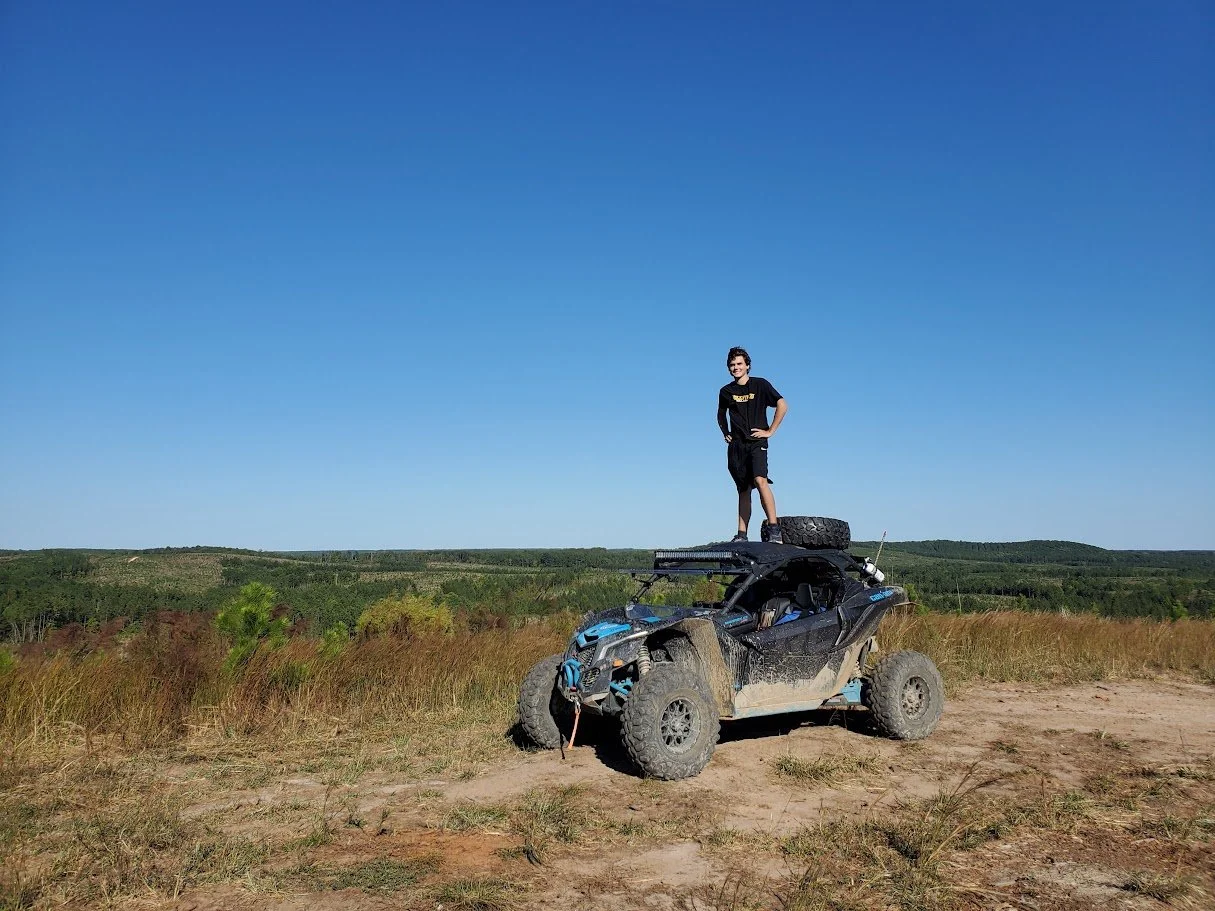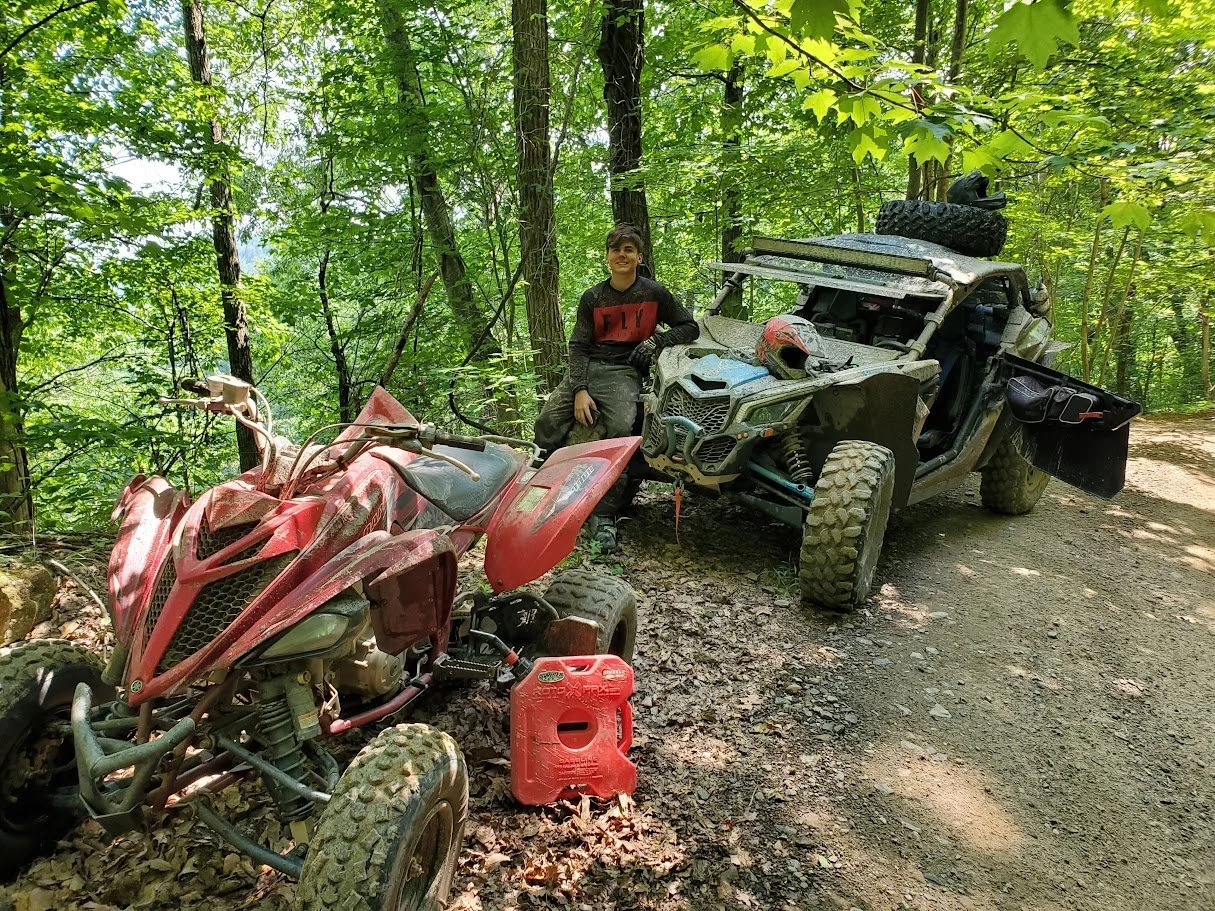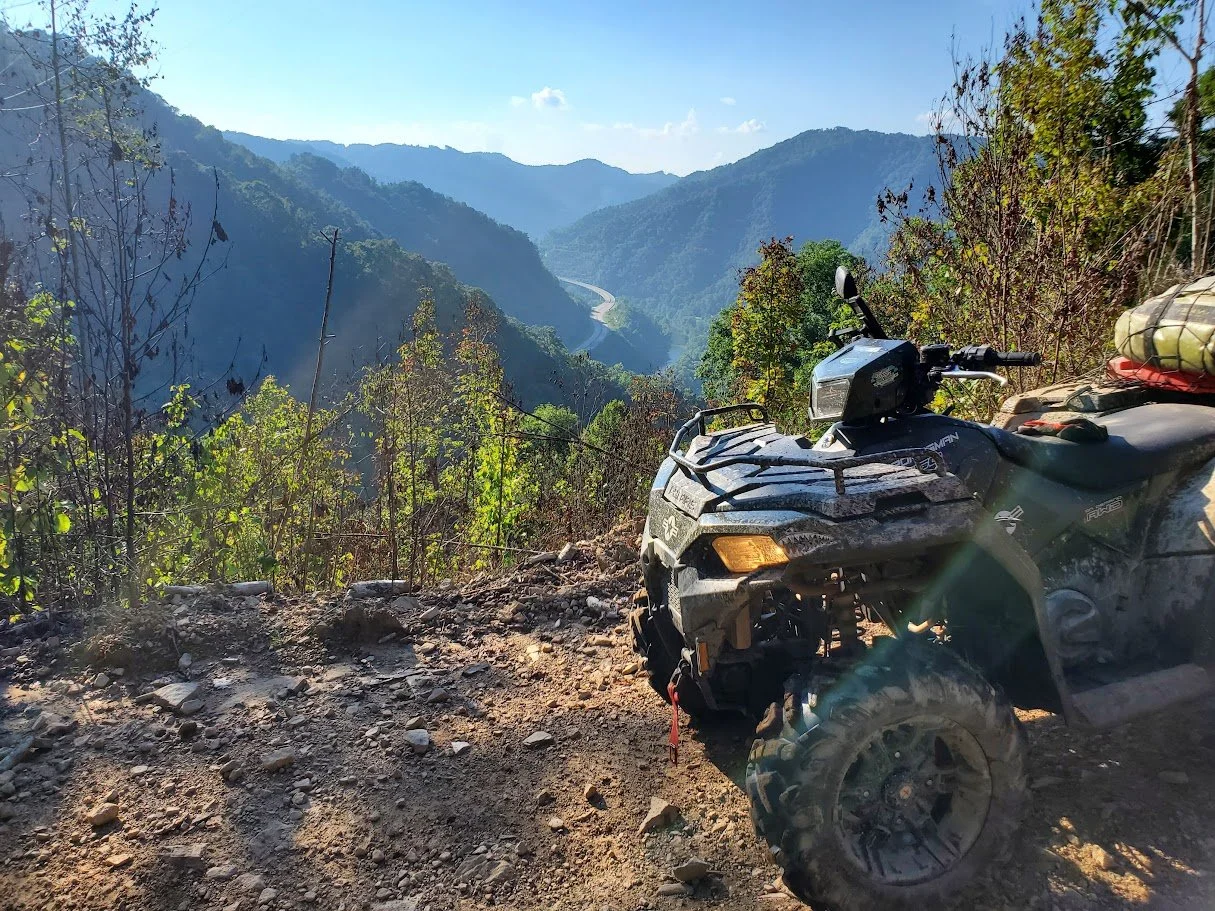
There is nothing like the thrill and adventure of off-road motorsports. Whether you have a dirt bike, four wheeler, or side by side, the serenity of cruising along smooth dirt roads and trails or the scary challenge of steep climbs cannot be beat.
We've explored and trailblazed over 7,000 miles of the best ( and a couple of the worst) off-road trails in the Southeast. By far the Hatfield and McCoy trail system in southern West Virginia is our favorite just because of the sheer size of it and the trails range from beginner to extreme advanced. Other systems of honorable mention are Hawk Pride Offroad, Top Trails, Stoney Lonesome, NATRA (membership required) and Indian Mountain.
Throughout our adventures we've learned that nothing ruins an off-road expedition more than an equipment failure or mishap that can't be remedied.
Over the years we've developed this list of things we have with every ride. We've used every item on this list, some of them just once, a few of them a lot. But before diving into the list, let's start with some general riding safety tips. The first few guarantee you come back alive and in one piece, the rest keep you from walking five to twenty miles from the middle of nowhere back to civilization.
Always wear a helmet. Something will happen, even on the straight and easy trails.
Wear riding boots, long pants, gloves and long sleeves on four wheelers, closed toe shoes and ear protection in side by sides. You can still hear your music, and your riding buddies music with foam ear plugs.
Don't ride beyond your skill level. It's ok to start out slow and pass by the steep hills and trails early on. There are some hills and trails we said we'd never try early in our adventures, now we climb them with little effort.
Look back often for the rest of your group. Or do as we did and mount a rear view bicycle mirror on the handle bar.
Never ride alone. Always have a trail partner.
Keep your hands and arms inside the side by side all the time, and particularly if it starts to roll. Your arm will not stop it. That's why you are snuggly strapped in with a four point harness within its roll cage. Always wear the harness.
If you lose control of your four wheeler, do not try to ride it while halfway on it, exit the machine.Yes, jump! It's ok if it hits a tree, just as long as you're not on it.
If you have a side by side, mount a spare tire and jack on your machine. Patch kits don't help with big gashes in your tire or if it's off the rim.
If you have a four wheeler or a side by side, install a winch if you don't have one already. You will use it. Often.
Spare gas cans are essential, even if you don't ride with a Yamaha Raptor that goes exactly 42 miles on a tank of gas. We know that from before we started carrying the fuel cans with us.
For your four wheeler, mount a bike mirror and water proof phone mount on the handle bar. The phone mount is so you can view your navigation app and not have to stop all the time to look at it. We use a tablet in the Can Am with a dashboard tablet mount and for the rear view camera app.
Goggles with tear aways for the four wheelers, or motorcycle riding glasses with dust blockers will keep your eyes happy.
Mount a fire extinguisher on your side by side. We've used ours twice over the years, not on our machines but on others that caught fire on the trail.
We call our essential gear bag our "expedition bag". Since we ride both a side by side and four wheelers, we simply move the bag from the Can Am side by side to the Polaris four wheeler, depending on the machines we take on the trip.
Get a water proof gear bag like the one shown. Ours is a divers bag, but in heavy rain it still gets damp inside. If it starts raining hard out on the trails, I cover it with a trash bag under the cargo net. I would not recommend the gear bag we have.
Stock your bag with:
blanket
scissors
tire patch kit
tire inflator you can run from the adaptor on your machine
collapsible hand saw
first aid kit
rope, at least 25'
tow straps with hooks, recommend at least 2 with lengths of at least 15'
steel shackles
soft shackle
snatch block
matches in waterproof holder or lighter
toilet paper
water
spare plastic bags
Phillips and flathead screwdrivers
socket and box wrench that fit the bolts on your machine
crescent wrench
clean rags
spare riding gloves
battery jump starter, we like Hulkman
hand warmers, the crush and get hot kind
rain gear and poncho, we like Frogg Toggs
tire gauge
tire patch glue accelerator
wire with a cutter built into the package
small flashlight
As you can see in the photos, this full gear bag sits comfortably on the plastic fuel cans on the back deck of the Polaris four wheeler, and transfers easily to the back deck of the Can Am Maverick X3. The cargo net not only guarantees your expedition bag stays on your machine, but allows for stuff to be stuck under it for temporary storage.
We hope you've found our gear bag essentials list useful and it keeps you rolling along the mountain trails.





















